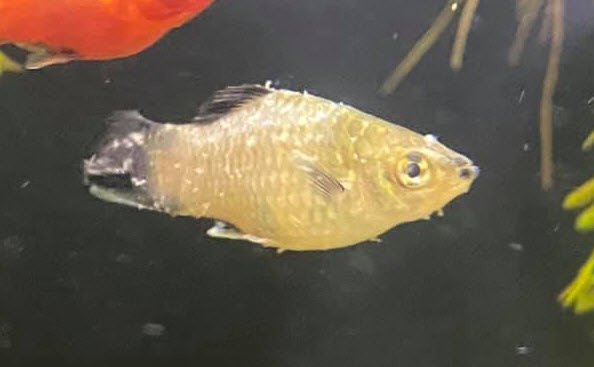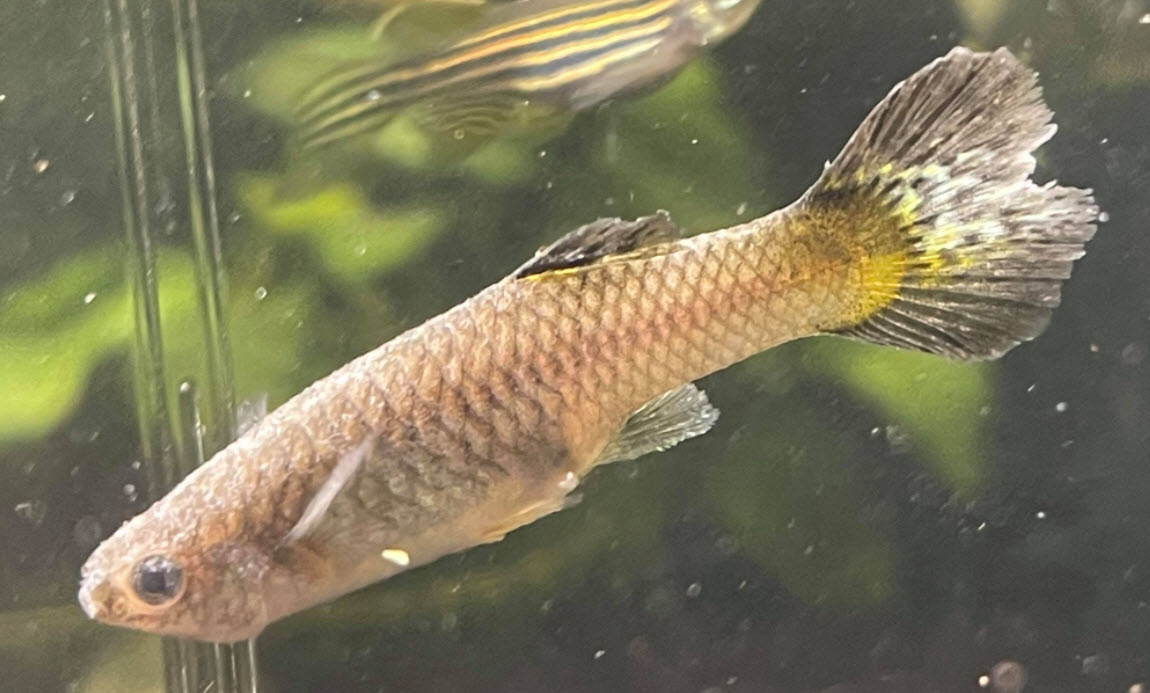Tetrahymena is a single celled ciliated protozoan closely related to paramecium and epistylis. It can be found in the detritus of most aquariums. It can be very similar in appearance on the fish to columnaris, ich and epistylis. Like epistylis, tetrahymena is found in the detritus of most aquariums and feeds on bacteria in the water column. And like epistylis, tetrahymena CAN be either commensural on a fish (only uses the fish as an anchor) or it can be pathogenic, attacking the fish and causing bacteria filled lesions.
Tetrahymena tends to occur in livebearers while epistylis tends to occur in fish other than livebearers. Tetrahymena doesn’t stick out into the water column from the fish like epistylis does. Epistylis will from branching colonies on stalks and can stick out quite far into the water. Tetrahymena only occurs as single cells but can form a flat “colony” of cells on the skin of a fish. But to confuse the matters further, it is common to have both tetrahymena and epistylis on a fish.
The disease of epistylis is covered in this link:
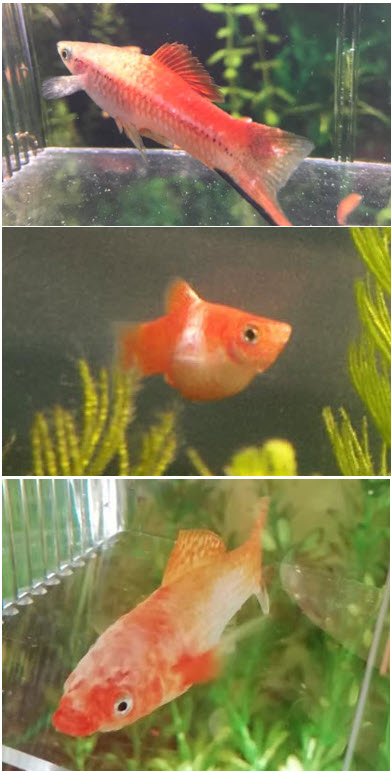
When the mulm and detritus build up or the bacterial count in the water column becomes high, tetrahymena becomes virulent. The high bacterial count in the water feeds the tetrahymena organism and it takes up immune system resources on the fish. This two pronged attack is difficult to combat. Tetrahymena attacks the skin of the fish and then burrows into the insides of the fish, often killing it rapidly. Once the tetrahymena is inside the fish it is virtually impossible to treat and the prognosis is not good.
Tetrahymena can present in many different appearances:
- It can be patchy gray or whitish areas that look like peeling skin. These white areas are commonly on top of the head of the fish or just in front of the dorsal fin.
- Like all skin protozoans it can produce patches of slime on the fish.
- Tetrahymena also commonly attacks the eyes and causes pop-eye and white eye (note ich doesn’t typically attack the eyes)
- Tetrahymena can also present as white spots somewhat like ich in appearance. But the tetrahymena spots are gray, not ceiling white like ich. Tetrahymena spots are also irregular in appearance while ich is a very round constant shape.
- Sometimes tetrahymena invades the external tissues of the fish and causes them to have translucent fluid filled blisters with raised scales (epidermal necrosis).
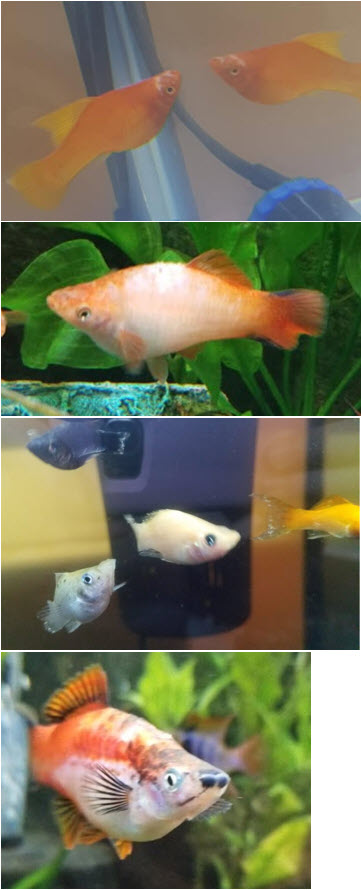
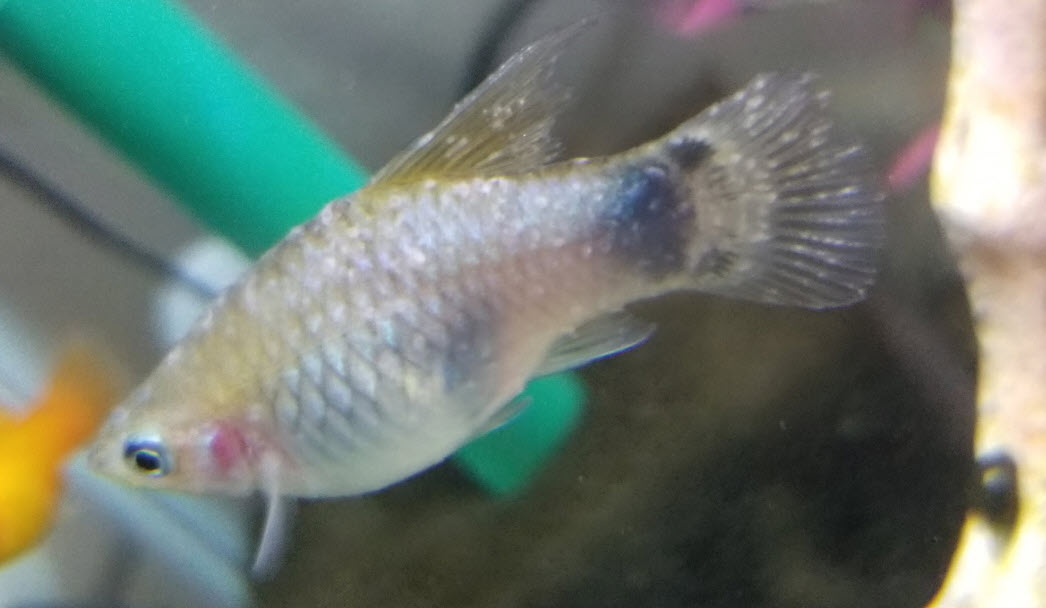
Tetrahymena commonly looks just like a case of saddleback, which is generally a bacterial infection caused by a columnaris. It is also common to have both tetrahymena and a bacterial infection going on. Which “came first” is immaterial as either can kill the fish. If there is a white patch high on the fish on the head or in front of the dorsal fin we recommend treating with an antibiotic in the food and only in the food.

Tetrahymena can also resemble ich (Ichthyophthirius multifiliis) in many ways. Affected fish can sometimes be covered with white spot-like cysts on their flanks and fins. They may also exhibit such symptoms as heavy breathing, lethargy and clamped fins. This mimics ich. But ich is always over the entire body of the fish while tetrahymena tends to be on one area at a time. The “spots” of tetrahymena are much more irregular than ich, more translucent, and tend to be in clumps rather than evenly distributed like ich.
| Witte stip | Tetrahymena |
|---|---|
| Uniforme ronde maat | Verschillende grove maten |
| Puur plafond wit | Doorschijnend grijs |
| Plat tegen de vis | Plat tegen de vis |
| Alle vis oppervlakken hebben stippen | Komt vaak voor als een witte vlek op het voorhoofd |
Swellings may develop in the muscles of the fish. Gray patches of mucous may be apparent, particularly on dark-colored fish such as black mollies. The spots may coalesce into fuzzy patches. Tetrahymena is most often found in guppies and livebearers. It is sometimes referred to as the “guppy killer” or “guppy disease”.
With guppies the symptoms of tetrahymena are rarely seen. The guppies just suddenly die. This is very common. The tetrahymena is only found if the dead guppies are examined via skin scrapings under a microscope. This is one of the reasons guppies require very clean, crystal clear water.
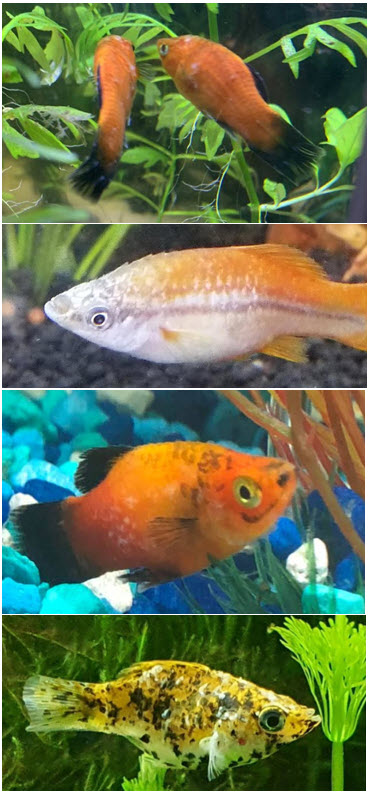
There are a whole series of protozoan diseases which can present themselves exactly like tetrahymena. These diseases include trichodina, chilodonella and costia. Occasionally epistylis will present just like this. The fact that the diseases are different is only found when microscope smears are taken of the skin.
Treating most skin protozoan diseases including tetrahymena can be done with a whole series of steps:
- Add lots of additional biofiltration (under-gravel, canister or sump) to filter out and thus kill the free swimming organisms. This added biofiltration also reduces the bacterial loading in the water which in turn allows the fish to devote more immune system resources to the pathogen.
- Change the filter media slowly over to a better media. Brightly colored pot scrubbers, foam and static K1 are very good media by testing. Ceramic rings, Matrix and lava rock are very poor media by those same tests.
- Add a formalin/malachite green medication (Ich-X, Rid-Ich Plus, Blue Planet White Spot Remedy and Mardel QuickCure) or a Copper based medication (Cupramine, Copper Power, Copper Aide or Copper Safe) to the water of the aquarium to kill the free swimming organisms.
- Do not put the fish in a hospital/quarantine tank
- Do not change out or clean the filter media.
- Do not raise the temperature of the tank
- Add a 24/7 UV sterilizer to kill the free swimming organisms and reduce the bacterial loading in the water which in turn allows the fish to devote more immune system resources to the pathogen.
- Added aeration always is helpful
When tetrahymena invades the tissues and cause translucent white patches (necrosis of the epidermis) and patchy “slime disease”, the organism becomes too deeply imbedded in the skin to be attacked by ich medications. And there is no internal medication effective against it. So death typically occurs.
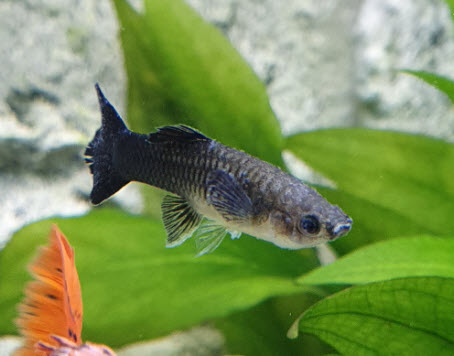
Compared to ich, tetrahymena causes death much more quickly and at a far higher rate. In some cases, an infected fish can appear healthy one day and be dead the next. Besides the limited time available for diagnosis, medications that work against ich or velvet tend to work poorly, if at all, against tetrahymena.
There is research which says a 3% salt bath (the salt concentration of the ocean), repeated every 24 hours is effective. Put the fish in a 3% salt bath for 30 seconds to ten minutes. When the fish loses equilibrium and rolls over, quickly return them to fresh water.
A liter of water is 1,000 grams. There are 5.69 grams of salt in a level teaspoon of salt. So a 3% solution is about 5 level teaspoons of salt per liter of water. Or 20 level teaspoons (roughly half a cup) per gallon of water in a tray. The exact concentration of salt isn’t too important, just make sure it is strong.
Tetrahymena is almost always is indicative of water with a high bacterial count and lots of organic matter in the water. High bacterial count indicates poor filtration. Poor filtration in turn can be caused by cleaning the filter media too often, having poor filter media or by having too little filter media. Adding much more biofiltration, a UV sterilizer and cleaning the aquarium substrate (NOT the filter!) well is often the only good solution to an outbreak of tetrahymena. Tetrahymena is rarely seen in aquariums with crystal clear water.
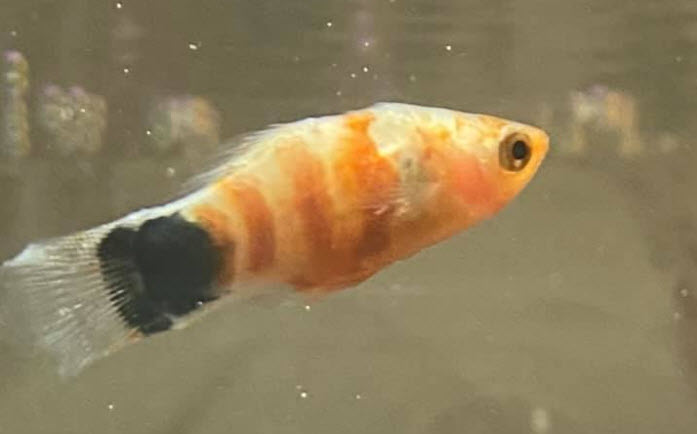
Treating Tetrahymena Indirectly with a Mature Filter
This is the confusing part of this, so I will try and make it as simple as possible. The tetrahymena organism is present in almost all tanks feeding on bacteria in the water. When the bacteria count in the water gets high, such as when a new tank and new filter are set up, tetrahymena can proliferate and end up on the fish. Once on the fish it can become pathogenic and erode the protective coating on the fish’s skin. This allows the tetrahymena and bacteria to enter the fish’s body and start septicemia (a bacterial infection).
With an old filter more than two months old or so the filter is “mature” and has a good coating of brown “gunk” on it. This brown gunk will have a ton of tetrahymena organisms (and other organisms much like tetrahymena) in it eating the bacteria in the water. The tetrahymena in the filter will eat so much of the bacteria in the water column that there will be not bacteria for tetrahymena organisms on a fish to eat and reproduce. So tetrahymena will not appear on a fish and cannot enter and kill the fish.
This disease prevention by an established, mature filter is a very important feature in all aquariums. It is why the experts keep emphasizing how a mature aquarium is so much more healthy than a newly set up aquarium. This is why it is so important for newcomers not to take things too rapidly. Add small numbers of small juvenile fish to any new aquarium. Go slow! And do not clean the filters until the flow slows down.
Epistylis and Tetrahymena
It is quite common to get both tetrahymena and epistylis in livebearers. Below are some fish which APPEAR to have both. But note without using a microscope one cannot be sure. These fish might also have columnaris as columnaris can also stick out into the water a short distance (the “column” in columnaris refers to the tall structures of bacteria). And all three can be seen in one fish, which gets really confusing.
